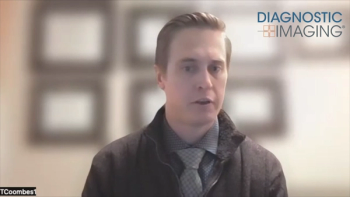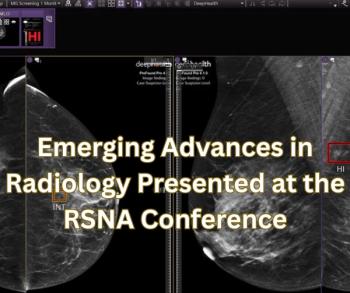
3T MRI vies with arthroscopy for detection of wrist ligament tears
Researchers at a private diagnostic imaging center in central Florida have shown 3T MRI of the wrist is nearly as sensitive and specific as arthroscopy for detection of wrist ligament tears. MR could spot abnormalities missed by standard imaging tests and avoid needless surgeries, according to the investigators.
Researchers at a private diagnostic imaging center in central Florida have shown 3T MRI of the wrist is nearly as sensitive and specific as arthroscopy for detection of wrist ligament tears. MR could spot abnormalities missed by standard imaging tests and avoid needless surgeries, according to the investigators.
Unlike bone fracture, wrist trauma often involves ligament injuries that tend to be overlooked and may lead to progressive functional deterioration of the joint. These injuries also frequently include the scapholunate and lunatotriquetral ("intrinsic ligaments") and the triangular fibrocartilaginous complex (TFCC).
Gold standard arthroscopy remains the most sensitive and specific test to diagnose these lesions, but it is costly and invasive.
Both 1.5T MRI and multislice CT have been proposed as alternatives. MSCT has shown higher accuracy than MR in European studies. According to principal investigator Dr. Thomas Magee, however, 3T MRI may up the diagnostic ante.
"The resolution with 3T MRI is good. We are able to see the small ligaments a lot better and determine whether or not they are torn," said Magee, a radiologist at Neuroskeletal Imaging in Merritt Island.
Magee and colleagues retrospectively reviewed 3T MRI wrist studies from 300 consecutive patients performed between January and June 2007. Forty-nine of these patients also underwent arthroscopy within 75 days of the MR exam. Two radiologists read the images by consensus blinded to arthroscopy findings.
The investigators found 51 tears on arthroscopy, 41 of which were also found using 3T MRI. Overall, the researchers found 3T MRI to be as sensitive and specific as arthroscopy for detection of wrist ligament tears. They published results in the January issue of the American Journal of Roentgenology (2009;192:80-85).
Thirty-five of the 49 patients also underwent fluoroscopy-guided 3T MR arthrography of the wrist joint using a gadolinium/saline contrast mix. Arthroscopy found TFCC tears in 22 patients, scapholunate tears in 18, and lunatotriquetral tears in 11. Nineteen TFCC tears, 16 scapholunate tears, and nine lunatotriquetral tears were seen on 3T MRI. There were no false-positive readings on MRI compared with arthroscopy. MR's sensitivity for detection of TFCC, scapholunate, and lunatotriquetral tears was, respectively, 86%, 89%, and 82%. MR's specificity for detection of all tears was 100%.
Nearly four in 10 people older than 40 may experience some type of ligament tear, usually the byproduct of trauma, wear, or tissue degeneration, according to Magee. Three-T MRI aids both patients and physicians by providing accurate diagnosis and treatment planning and, sometimes, by ruling out surgery in patients with normal findings.
The Florida study had limitations. Although MR arthrography bolsters sensitivity, it can also lead to false positives because of microperforations. Previous studies have shown that MRI -- unlike conventional fluoroscopy or CT arthrography -- can accurately characterize abnormalities causing symptoms similar to ligament tears, such as bone bruises or cysts. Researchers did not, however, compare 3T MRI with MSCT arthrography.
"If surgery is being contemplated, I advise people to have an MR scan to determine the cause of pain before arthroscopy," Magee said.
For more information from the Diagnostic Imaging archives:
Gymnastic complaints extend beyond common growth plate injuries3T MR beats 1.5T for ulnar wrist pain imagingMusculoskeletal 3T imaging gains clinical acceptance
Newsletter
Stay at the forefront of radiology with the Diagnostic Imaging newsletter, delivering the latest news, clinical insights, and imaging advancements for today’s radiologists.




























